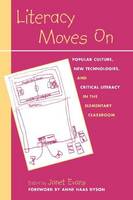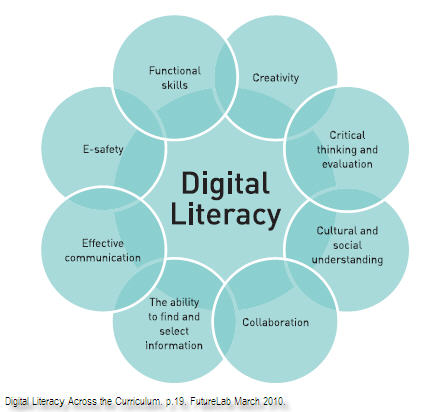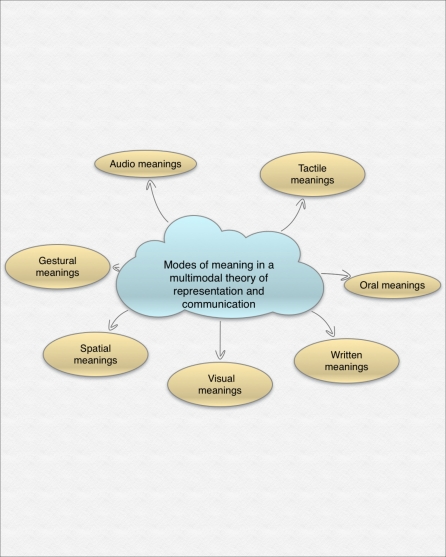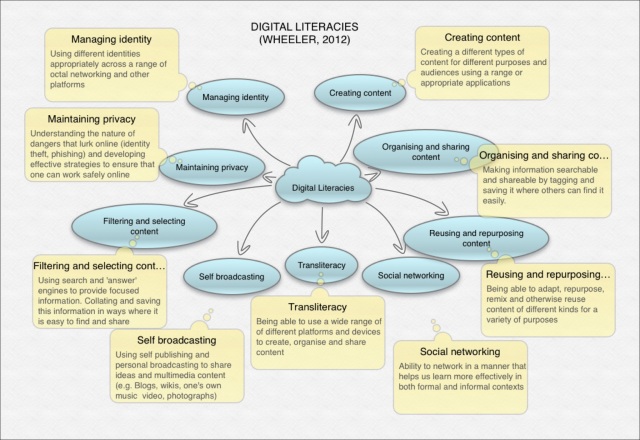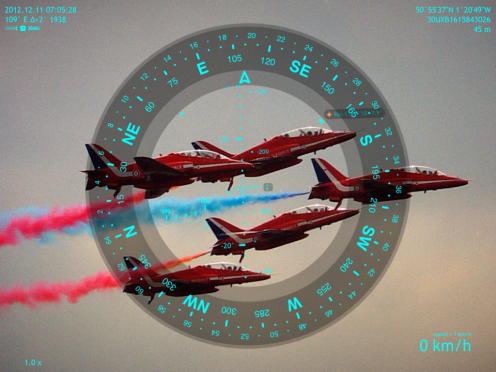What are the conditions of life for our students in the era of the new, digital media? To return to and extend our earlier argument, as well as being vicarious viewers of movies, today’s learners also play computer games in which they are the central character and in which their actions and identities in part determine narrative outcomes. They do not just listen to the top forty songs on a play list constructed by the radio station’s play list; they create their own playlists on their personal listening devices. They are not only consumers of broadcast television, but also cruise across thousands of television channels and millions of YouTube clips; or they make their own videos and upload them to the web. And rather than reading and writing being separate activities, as often as not, they are positioned as writers at the same time that they are also readers in today’s writing experiences—in wikis, blogs, Facebook or MySpace, instant messaging, SMS or Twitter. Traditional relationships of culture, knowledge and learning are profoundly disrupted, and even the terms of the either/or differentiations we have hitherto ascribed to these relationships: creator/audience, producer/consumer, and writer/reader. These old distinctions have all become blurred. The key to these changes is an intensified cognitive and practical input on the part of previously more passive recipients of culture and knowledge, a shift in the direction of the flows of knowledge and culture, a transformation in the balance of creative and epistemic agency.
Kalantzis and Cope (2012) New Media Literacies.
In the past, the term ‘literacy’ referred simply to the ability to read and write, the medium of these processes being paper. However, technological changes have developed a range of new ways of reading and writing, using digital mediums which are radically different from traditional paper-based ones. The idea of a discrete ‘digital literacies’ and the need to look at the notion of ‘literacy’ afresh, developed from this.
Early discussions about ‘digital literacy” by people like Gilster emphasised the need to take an ‘inclusive’ view of literacy in a way that allowed the inclusion of traditional ‘print’ literacies. This is useful, given that paper and screen based mediums exist in tandem and complement one another. This being the case, the early use of the terms ‘digital literacy’ and ‘digital literacies’ extended to literacy in the digital age. However, more recent discussion focuses specifically on digitally generated texts and the way in which ongoing developments drive changes in the way we engage with one another. It is worthwhile looking at the special affordances they provide and the challenges they present.
The diagram below (Futurelab) identifies eight main issues which we need to take into account when looking at the concept.
Prensky’s paper entitled Digital Natives, Digital Immigrants (2001) highlighting the ease with which those exposed to digital devices at an early age embraced them. As early as 2004, Evans noted that young people were “initiating, appropriating and establishing changes to literacy practices in a fast and furious manner. These changes, using the ground-breaking and rapidly developing technological advances of this new century, mean that young children and the youth culture of today are living their lives with and through the aid of digital technology.”
Buckingham, (2007), a media specialist, reported similarly, stating that children were using digital mediums more often and that the Internet, computer games, digital video, mobile phones and other contemporary technologies were providing them with new ways of representing the world. He noted that these tools facilitated opportunities for children’s imaginative self-expression and play, serving as a medium through which intimate personal relationships were being conducted. Outside school, he says, children are engaging with these media, not simply as technologies but as cultural forms. Buckingham challenges educators to take note of this, so as to be in a position to provide students with the means to understanding them fully and to use them appropriately. For Buckingham, this is what digital literacy in the classroom is about.
Lankshear and Knobel (2008) point out that just as we we need to understand that ‘literacy’ involves particular kinds of texts and particular ways of reading that vary enormously, (comics, books, poems, legal briefs, technical manuals, newspaper and academic articles requiring different backgrounds and skills to be read with understanding), the same applies to digitally mediated literacies, which involve a wide range of social practices and conceptions of engaging in meaning making. Digitally generated texts are represented by a wide range of genres, including blogs, video, texting (SMS), instant messaging, online social network pages, discussion forums, Internet memes, FAQs, and online search results.
Jones and Hafner (2012) also note that reading and writing are increasingly mediated by digital devices, characterised by “new literacy practices, shaped by the affordances and constraints of digital tools” (35). They highlight important differences between traditional and new mediums. For instance, while most books are designed to be read from front to back in a linear fashion, digital sources are not – they are generally more interactive, provide the ability to move about the source in a non-sequential way by using hyperlinks, based on the reader’s own choices. This allows readers to play a more active part in reading than is the case in traditional print-based media. Furthermore, digital texts provide a multimedia approach to reading, providing images, video and audio resources to support the text. These are characteristics of what we call multimodal texts. Jones and Hafner say that this enables us, both as readers and writers, “to interact with texts in ways that were previously difficult or impossible” (35). For instance, it is easier to contact the author to point out errors via email or the comment facility and, in some cases, to annotate the texts we read and engage in conversations with other readers. These new affordances, say Jones and Hafner (2012:36), “have required people to rethink their understanding of reading and writing, refine their ideas about what a reader is, and adopt new practices in reading and writing.” This does not mean that the reader takes total control of the hypertext reading experience, as the creator of the text determines the links, thus providing limits to our reading. This being the case, warns Burbules (1998: in Jones and Hafner, 39) we need to ensure that we are critical when interpreting links in hypertext, asking questions about the associations the writer is making, those the writer is not making and the assumptions and biases that these reveal.
Kalantzis and Cope (2012), in their book Literacies, identify seven modes of meaning in their discussion of multimodal theory. The graphic above provides a representation of these.
- Written meaning – writing, and reading
- Visual meaning – making still and video images
- Spatial meaning – positioning oneself in relation to others, creating spaces and ways of moving around in spaces
- Tactile meaning – making experiences of things that can be felt in terms of touch, smell, taste
- Gestural meaning – communication through movements of the body, hands, arms, facial expressions, eye-movement, demeanor, gait, clothing and fashion, hairstyle… (see Multimodal representations of identity in the English-as-an-additional-language classroom in South Africa for examples of these modalities)
- Audio meaning – communication that uses music, ambient sounds, noises, alerts, hearing and listening
- Oral meaning – communication in form of live or recorded speech.
Clearly, digital technologies are able to represent a good number of these, but not all – yet!
Jones and Hafner also draw attention to Ong (1996) and Wolf (2007), who have highlighted the point that the development of writing helped to change the way we think, freeing us up to engage in abstract reasoning as opposed to memorising facts. Today we believe that learning to read results in physiological changes to the brains of children, with learning to read additional languages enabling other changes. On a recent BBC2 television programme (Dara O’Brien’s Science Club, episode 5), the idea was raised that no longer needing to remember telephone numbers provides similar freedom for the brain to do other things. Jones and Hafner ask whether it is reasonable to ask whether the shift to reading hypertext could result in cognitive changes.
Research by Rowlands et al. (Jones and Hafner, 40) suggests that early exposure to hypertext helped participants to develop “good parallel processing skills needed to move efficiently from one document to another”. However, there is concern that this can impact negatively on the sequential processing skills required to understand the logical progression of longer narratives. Carr, (2011, in Jones and Hafner, 40) suggests that “reading hypertext may compromise our ability to read conventional texts and follow complex arguments”, with the stimulus of moving between documents short circuiting “both conscious and unconscious thought, preventing our minds from thinking either deeply or creatively”. However, Pinker (2010) suggests that such distractions have always been present and that we have developed ways of dealing with them. His claim is that “the ability to reason and follow logical arguments does not come from the media we use, … but from effort and education” (Jones and Hafner, 40).
Wheeler, (2012: 15) provides a useful overview of digital literacies, which he describes as ‘widely disruptive’. “…new media and digital technologies offer new opportunities for learning, yet the disruptive nature of these tools and the seismic changes that they bring require us to conceive an entirely new set of literacies.” Importantly, he emphasises the idea that digital literacy is NOT about skills or competencies, but rather about ‘cultural engagement’, which I would take to involve a good understanding of the digital world around us and how to operate successfully within it. Wheeler identifies nine key digital literacies:
- social networking
- transliteracy (ability to operate across a wide range of digital platforms)
- maintaining privacy (staying safe online)
- managing identity (using multiple online identities)
- creating content (eg – blogs, participating on wikis, discussion groups)
- organising and sharing content (posting to different platforms, saving and collating information online)
- reusing/repurposing content (mashing, mixing)
- filtering and selecting content (finding, saving content in ways which enable us to find it easily)
- self broadcasting (sharing one’s own content with others across different platforms).
Most of these aspects are expanded upon below, albeit under different descriptors.
Blogs and Blogging.
Blogging is an easy and effective way to generate, save and share content. Rebecca Blood, an early analyst of blogging, regards blogs as the first native genre of the internet, given that they have no clear predecessor in print-based media. Jones and Hafner suggest that blogs draw on the communicative affordances of digital media in a way that has created something unique and that they can teach us a lot about new practices of reading and writing hypertext. The subject matter covered by blogs varies greatly, being created and maintained for very different reasons. These include personal diaries/journals, alternate takes on the news and events, critiques of mainstream broadcasting and news events (news watch), commercial practices of various kinds, personal views on politics, marketing, archiving, images (photo blogs, video blogs, audio blogs), augmenting hobbies and pastimes (collections, techno-gadgetry, sport, genealogy, fanzines, travel journals educational tools, for delivering content, as class diaries, and for reflecting on practice. Lankshear and Knobel (2008) suggest that the diversity of weblogs and weblogging practices cautions against conceiving blogging as a specific singular type of writing.
Blogging software provide an easy to use editor and a range of attractive templates for writers to choose from. Further choices are provided in respect to add ons in the form of blog rolls (links to the blog sits of others), links to Flickr sites and so on. The structure of blogs is unique, in that ‘posts’ are displayed in reverse chronological order. Hyperlinks play a major part, allowing bloggers to provide evidence of their claims in the form of newspaper and other online articles. Internal links are also possible, with links to one’s own earlier posts. Perhaps most important is the comment feature, which allows readers to enter into a dialogue with the author or one another. In many cases, the comments provide a more interesting discussion than the original blog post.
Jones and Hafner (2012) suggest that blogs show that digital media has changed in ways that people think about the practice of reading and writing, with bloggers seeing them as interlinked, with the one feeding into the other. Furthermore, publishing a post is not the end of the line as in the case of a printed article, but a part of a process where comments by readers provide an ongoing conversation. An important aspect of digital media is that they are “always evolving and always unfinished” (Jones and Hafner, 42).
Bloggers and tweeters have, in the past, considered themselves above the law, resulting is a series of libel suits. The recent Leveson inquiry has made it clear that they need to adhere to the same standards as traditional media organisations. However, there is now a realisation that the law has been overzealous in the past, as in the case of Paul Chambers, who was successfully prosecuted for his joke tweet about Doncaster airport. Recently, Keri Starmer said that the law would in all likelihood take age into account over abusive posts, except in the case of sustained attacks by internet ‘trolls’. (The Times, 18/12/12) or excessively offensive online behaviour.
Mashups and Remixing.
Another interesting aspect of digital narratives is the ease with which content can be mashed and remixed. Mashing refers to the ability to take an original artifact and change it so as to add value in some way. For instance, the popular practice of combining two or more songs to create a new one which is very different from the originals, or to combine web resources in such a way as to make something new and useful, as done by combining a map with photographs to show where thy were taken. Remixing usually refers to changing an original artifact into something unique and different, be it a ‘remix’ of a song (think about the two different versions of Eric Clapton’s song Layla) or a ‘re-interpretation’ of a photograph. The photographs below are examples. The second photography has been edited (remixed) to provide a more striking image, highlighting the curve of the London Eye. The final photograph is a mashup – where an image has been superimposed on another to provide a more impact.
What is important here is that editing digital mediums is very much easier and cheaper than mediums that came before. This means that more people are in a position to enjoy working with these mediums, including children. Digital still and video capability is built into most mobile phones, as are sound recorders. Both image and audio editing suites are affordable.
Intellectual property, ownership and copyright issues.
In academic circles, the practice of acknowledging sources of information by citing and referencing is well established. However, the ease with which digital sources can be copied and pasted leads in many cases to situations where work submitted by students “reads like a patchwork of online articles cut and pasted into their assignment without any proper form of attribution” (Jones and Hafner, 45). This is further complicated by the fact that software like Turnitin identify one’s own previous work as a source and mark it as possible plagiarism, making it necessary to reference one’s own previous work.
In the commercial world of music and photography, some see remixing as theft which deprives them of income from their work, notwithstanding that others might see the new product as distinctly different. For example, Hitler film parodies on YouTube could well be seen as breaching copyright rules, but have not resulted an any legal action to date. However, one needs to be extremely careful when targeting individuals, as an executive of BNP Paribas found out. Lankshear and Knobel make the point that different people read and interpret the same text in different ways, with some unable to make sense of texts that others handle with ease. The same applies to photoshopped images, which are taken literally by some, but simply as absurd remixes of images by others with a better understanding of the medium. Lessing (in Jones and Hafner, 46) suggests that remixes and mashups are more than simple copying, requiring “a creative reworking … so that when it is placed in the new context and mixed up with texts from with other sources it takes on a new meaning or significance.”
Mikhail Bakhtin (1986:89), cited by Jones and Hafner, (45) points out that texts are “filled with others’ words, varying degrees of otherness or varying degrees of our-ownness”. The essential issue here is that there is no true original version of anything and that we necessarily build on the ideas of others. Lessing argues that the “law acts to constrain creativity and the development of culture, by unnecessarily limiting the extent to which people are free to build on the work of others” and that people have less freedom to borrow and build on the creative works of the Disney Corporation in the way its founder borrowed to build on the creative works of others.” This notwithstanding, mashing and remixing are very common forms of creativity on the web.
Lessing is the person responsible for the Creative Commons licensing system, whereby owners can indicate to others clear terms under which their material can be used. Creative Commons copyright is often seen on blogs, wikis and photo sharing sites like Flickr. This image can be used by anyone as long as it is attributed to the owner, is not used for commercial purposes and is not used in a derivative form – that is, no mashing.
Micro blogging and texting.
There are a wide range of other ‘new’ literacies based on text, such as texting, email, messaging and micro-blogging, What is particularly interesting about these is the form they take – essentially short bursts of words, in most cases using platforms which are asynchronous. These platforms are extremely popular, notwithstanding the fact that they do not take advantage of the ‘rich’ multimedia affordances (images, audio, video) that other digital technologies offer.
Written language remains our primary communication tool in online environments (Jones and Hafner). Some forms of writing like texting, which is very popular with young people, generate controversy given that users make use of non-standard grammar, spelling and abbreviations, generating accusations that the use of computer mediated communication systems has resulted in children’s writing becoming substandard and impoverished. The original over-reaction about such language has largely been debunked by writers such as David Crystal, who has shown that claims that children can no longer write, with allegations of ‘text speech’ common in GCSE exams, cannot be substantiated. Crystal shows clearly that children are aware of the difference between traditional writing and informal writing, where interesting and creative new forms of language, driven by the limitations of 140 characters, are used appropriately, adding to the richness of our language rather than destroying it.
Jones and Hafner point out that while these short messaging forms might lack the rich cues of face to face conversations and the affordances of richer digital systems, users of sms and other short messaging systems have developed ways in which to limit these shortcomings. These include the use of abbreviations, non-standard typography and spelling and emoticons. Furthermore, they point out that these do more than simply substitute for “the kinds of cues we use in face-to-face conversations” (70) and that we cannot assume that “there is a more or less one-to-one correspondence between emoticons and facial expressions and between certain forms of non-standard spelling and actual speech” (70) Thus, while systems of emoticons and typography draw on facial expressions and phonology “they are not simple replications of these systems in writing. They are systems in their own right, with their own conventions and their own sets of affordances and constraints” (70).
Jones and Hafner contest the oft held belief that text based digital communications are an ‘imperfect replica’ of transitional modes of communication and that claims that they lack richness are based on a false deficit model of analysis. People do very different things with text based digital communication than in normal written or verbal conversations, Additionally, simple sms type digital communication has resulted in a wide range of new interactions which were not possible up till now.
The story goes that the developer of Blogger, Evan Williams, tried to ‘add value’ to the blogging experience by developing audio blogging, by which bloggers could make their posts ‘more expressive’ by embedding recordings of their own voices. There are a number of apps which enable one to do this easily, including Audio Boo. However, the idea of audio blogging has never really taken off. Nor have other ‘rich’ media approaches. Jones and Hafner (73), point out that even though computers come standard with webcams and most IM clients, and that video chat is supported by many social networking clients, “very few people actually engage in this form of interaction.” However, another development by Williams, the micro-blogging platform Twitter, which limits a post to 140 characters, has proved extremely successful in spite of it providing little in the way of richness that other digital media provide.
The reason for the success of Twitter and other ‘impoverished’ media like sms is that of transactional costs – essentially, the effort and hassle involved in transacting or sharing information. The richer the medium, the higher the transactional costs involved, given that we have to attend to more modes while engaging with others. A face to face conversation involves a wide range of niceties – small talk, showing interest and attention, ensuring that our gestures, facial expressions and voice quality are appropriate and that our responses are delivered within the time frame expected by the person we are talking to. A text based communication, be it a message (sms) or a tweet, cuts across these demands, enabling us to concentrate of the essential message (which could include taking more time to consider how replies or questions are framed) and enables us to do other things (multitasking) at the same time.
There are other reasons for the popularity of tweeting and sms. For young people, it provides a way of communicating with friends without their parents listening in. Low cost interaction via sms and Twitter also provide new affordances – “increased opportunities for monomodal communications using only text” (Jones and Hafner, 2012:74) which support the ability to communicate and maintain relationships more regularly but in less detailed ways. Low transaction cost mechanisms support sharing of thoughts, feelings and ideas. Jones and Hafner suggest that what people are mostly doing when they share is less a matter of transacting information as maintaining connections with friends – doing friendship.
18h40 Cheesecake: hihi
19h08 Snowbread: wowo
21:33 Cheesecake: kaka~~~
23h05 Snowbread: ~^.^~
This series of interchanges between two friends, according to Jones and Hafner (74), is not a real conversation but a process of maintaining a virtual connection, as suggested by earlier work by Berg, Taylor and Harper (2005), in which they identified young people’s text messages to one another not so much as an exchange information but rather as the exchange of tokens of friendship
In others ways, low cost texting is also instrumental and efficient – asking a partner to pick up a packet of sugar, informing a friend that one will be late, telling the boss that a report has been completed. Before texting, doing these interactions involved long and complicated phone conversations and a trip down the corridor and knocking on the boss’s door.
The limitations of getting a message across in 140 or so characters has already been seen to force users to be creative and imaginative in terms of using emoticons, short forms and newly created words. In an innovative experiment by the University of Iowa, applicants for the School of Business were told to submit admissions essays in tweet form, with the promise of a scholarship for the most creative effort. The winner submitted a haiku, “creatively combining one of the newest forms of communication with one of the oldest forms” (Snee, 2011 – in Jones and Hafner, 78).
Digital Identities.
Another affordance of text-based digital communications is the facilitation of new identities, by which people can ‘assume’ new personas. There are a range of reasons for this – avoiding identification, acting out a different role to the one we use in real life and to comment on our lives from behind a mask, rather like a clown, actor or puppeteer does. Often, people will join a service not knowing quite what to expect, and will use an assumed identity while they test the waters. Avatars and false identities abound on the web. We see people describing their lives while using the persona of a fish (Twitter feed Erica’s Fish @ericasfish), or other domestic creature. These false personas are often transparent, but this is not always the case, as indicated by this well known cartoon.
Tweets:
I will be featured in 2 books! That sound you hear is the human sobbing over her English degree.
18 Jul 11 Erica’s Fish @ericasfish
Erica’s Fish @ericasfish
Homeowner Association mtg = disaster. 5th proposal for bowl upgrade denied. Why’d I vote for the cat for HOA president. WHY.
20 May 11 Erica’s Fish @ericasfish
Erica’s Fish @ericasfish
Dear @amychua – My mother tried to eat me while I was encased in an egg. Frankly I find your tiger parenting a bit wimpy.
25 Apr 11 Erica’s Fish @ericasfish
Erica’s Fish @ericasfish
The cat is asleep with a paw on her face. She is a heap of dumbness, mesmerizing and beautiful.
These trans-personalisations allow people to analyse and comment on themselves and their world from another perspective. There are aspects of this kind of behaviour which can be dangerous, as in cases of old men masquerading as young men or even women, so as to create digital relationships (and possibly physical ones) with others, which could make the target of these relationships vulnerable. However, deception and harassment are not always the case and Turkle (1965 – in Jones and Hafner, 79) suggests that young people can use ‘identity play’ to ‘try on’ different kinds of identity in the safety of their own homes. People who engage in such text-based identity play are not necessarily pretending to be someone else but exploring different aspects of the ‘real life’ identities, as in the case of Erica’s Fish, where Erica “is communicating about herself, what happens to her and how she feels about it through her fish.” This is a case of a person using identity play to look at and comment on her life from a very different perspective – “a process which helps her to share different aspects of herself with her followers” and to reflect on her life and activities in a different (and perhaps creative) way. More importantly, suggest Jones and Hafner, is the way it helps to use different styles of writing and inventing screen names, message signatures and by aligning themselves to different groups and communities by using different social language.
Managing Content.
Managing the wealth of information online effectively so as to be able to find it at a later date can be a challenge. A good number of people rely on the use of their browser’s ‘Favourites’ or ‘Bookmarks’ feature. While these work for often used links, they are far from adequate when saving a large number of articles on a variety of topics which are returned to from time to time. For instance, a blogger writing about an issue such as police brutality and corruption will need to save articles as they are reported to use at some later date. Arranging these effectively in, for instance, folders, takes a good deal of time and effort. Social bookmarking applications like Delicious and Diigo are far more effective for this kind of resource management, providing a simple click on link to save the article. Finding the relevant and related articles is made easy by the process of using one’s own system of ‘tags’ – simple words and phrases (UK, police, policing, Met, police brutality, corruption, fraud, set-up, manufactured evidence, lies, deceit) which one remembers easily. When looking for articles relevant to these posts, one need only put in the most commonly used tag(s) (police, UK) to bring all the sources up. Tagging us widely used in web 2.0 applications, including blogs like this one.
Conclusions.
We see that the term digital literacy has two distinct meanings. The first refers to an overall understanding of the digital world in which we live and the impact that digital technologies have on the way our society, its institutions and ourselves individuals. The second refers more specifically to the applications and devices we use to create and share information – that is, to ‘write’ and ‘read’ using digitally mediated mediums. What emerges from this is the power of the participatory read/write web, where we share a wide range of information via blogs and wikis, Twitter, YouTube or photosharing services like Flickr, Instagram, EyeEm, Starmatic or Hipstamatic. New Media/Literacies are about being creative and sharing information on the public space. In many respects, this space is akin to the Wild West, where participants make up their own laws as they go along. And like the wild west, dangers abound. The greatest of these is probably access the the information that we do not intend to give away – the personal data that we use to sign up for services and which the bandits of the internet abuse in a range of ways, including selling off contact information to touts who use it for marketing purposes and criminals who abuse it by stealing our identities and/or money. Other organizations, including Facebook, annex our information and resources and treat it as their own, using byzantine methods to keep their dealings secret from customers. As this moment, the Facebook owned photo service Instagram is attempting to back down from its recent declaration that photos taken and shared using their service will henceforth be regarded as their property. At the same time, international debates are taking place which could see the world wide web regulated to a far greater extent. What is particularly worrying is that oppressive regimes are leading the call for this regulation, with themselves as the chief regulators. Quite how all these issues will be resolved is not clear. However, users of the web need to realise that united action might soon need to be taken if the freedom of the web as we know it is to be maintained. The affordances of new literacies, together with the web in terms of the ability to reach a large number of people quickly has already been used successfully to express the public will and ensure that people like Gary McKinnon was not extradited to the USA. Pressure groups active in the UK include 38 Degrees and Avaaz.
These concerns notwithstanding, the use of the wide range of Web 2.0 applications provides us with a range of powerful tools with which to create and share information, be it textual, visual, audial or, as is ofter the case, a combination of these in the form of multimedia presentations. We have seen that these applications enables us to be creative and that they appeal to and are regularly used by younger people. We also see that there is a divide between the ways in which younger people use these technologies at home and at school, with home use generally providing greater opportunities for creating and consuming information. This situation poses challenges which schools need to face.
References:
 Buckingham, D. (2007) Beyond Technology: children’s learning in the age of digital culture. Polity Press, Cambridge.
Buckingham, D. (2007) Beyond Technology: children’s learning in the age of digital culture. Polity Press, Cambridge.
Evans, J. (2004) Literacy Moves On. Using Popular Culture, New Technologies and Critical Literacy in the Primary Classroom. David Fulton.
Futurelab. (2010) Digital literacy across the curriculum.
Hafner, C. & Jones, R. (2012) Understanding Digital Literacies. A practical introduction.
Kalantzis & Cope (2012) Literacies. Cambridge University Press.
Kalantzis & Cope (2012) New Learning. Transitional designs for pedagogy and assessment.
Lankshear, C. & Knobel, M. (Eds.) (2008) Digital Literacies. Concepts, Policies and Practices. Peter Lang, New York.
Wheeler, S. (2012) Digital Literacies for Engagement in Emerging Online Cultures. eLC Research Paper Series, 5, 14-25.
Other useful articles.
Disruption can be good. José Picardo, Network.Ed blog, 12/5/2012.

